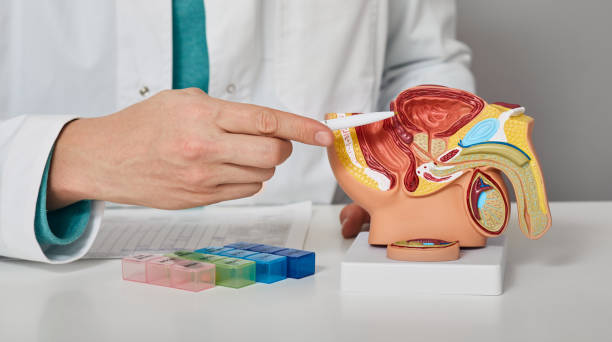Prostate problems are common in men as they age, and can cause a variety of symptoms that can greatly impact their quality of life. Understanding the symptoms of prostate problems and the various treatment options can help men make informed decisions about their health.
Symptoms of Prostate Problems
Urinary problems: One of the most common symptoms of prostate problems is difficulty urinating, including a weak or slow stream, or a frequent urge to urinate. Men may also experience pain or burning when urinating, or the need to urinate frequently, especially at night.
Erectile dysfunction: Another symptom of prostate problems is erectile dysfunction, which can cause difficulty achieving or maintaining an erection. This can be a result of nerve damage caused by prostate surgery, or by the compression of the nerves that control erections.
Pain in the lower back, hips, or upper thighs: Prostate problems can also cause pain in the lower back, hips, or upper thighs, which can be a result of inflammation or infection of the prostate.
Blood in urine or semen: Men with prostate problems may also notice blood in their urine or semen, which can be a sign of prostate cancer.
Treatment for Prostate Problems
Medications: There are several medications that can help manage the symptoms of prostate problems, including alpha-blockers, which relax the muscles in the prostate and bladder, and 5-alpha reductase inhibitors, which reduce the size of the prostate.
Lifestyle changes: Making lifestyle changes, such as maintaining a healthy weight, eating a balanced diet, and getting regular exercise, can help reduce the risk of prostate problems and improve symptoms.
Surgery: In some cases, surgery may be necessary to treat prostate problems. The most common types of surgery for prostate problems are transurethral resection of the prostate (TURP), which removes a portion of the prostate through the urethra, and radical prostatectomy, which removes the entire prostate.
Radiation therapy: Radiation therapy, also known as radiotherapy, is a type of treatment that uses high-energy beams to destroy cancer cells. This can be used to treat prostate cancer and can be delivered externally, through a machine outside the body, or internally, through radioactive seeds placed directly into the prostate.
Cryotherapy: Cryotherapy is a type of treatment that uses extremely cold temperatures to destroy cancer cells. This can be used to treat prostate cancer and is performed by inserting needles into the prostate and using liquid nitrogen to freeze the cancer cells.
Hormonal therapy: Hormonal therapy is a type of treatment that stops the body from producing testosterone, which can help slow the growth of prostate cancer. This can be done through medications or surgery to remove the testicles, the primary source of testosterone.
In conclusion, prostate problems can cause a variety of symptoms that can greatly impact a man’s quality of life. Understanding the symptoms and the various treatment options available can help men make informed decisions about their health. If you are experiencing symptoms of prostate problems, it is important to see a doctor for a proper diagnosis and treatment plan.

 Home
Home Health
Health Diet & Nutrition
Diet & Nutrition Living Well
Living Well More
More












